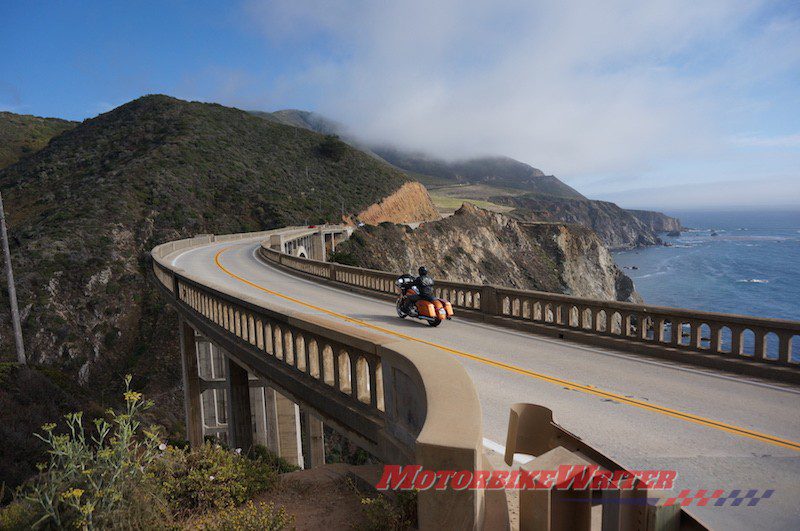(Contributed post)
Motorcycle accidents have been one of the major problems on the road in California. Motorcyclists don’t have a steel or sturdy material to protect them when accidents happen- as cars do. Hence, there’s a high chance they’ll be thrown away during any vehicular collision.
Motorcyclists are less visible and conspicuous to other vehicle drivers and pedestrians. The two-wheel vehicles are also less stable than the land vehicles with four or more wheels. The driver must be both mentally and physically aware when driving a motorcycle.
Many factors affect the drivers’ safety and focus while on the road. It could be because of a problem with the motorcycle, bad weather, or something wrong with the driver themselves. However, most motorcycle accidents occur because of road violations committed by these drivers. Here are some of the most common violations committed by motorcyclists in California.
Speeding
The speed limit in California varies. Most highways have a maximum speed of 65 mph, while some have 55 mph. Hence, driving beyond these speed limits is considered “speeding,” which is against the law. Drivers must slow down their speed depending on essential contributory factors.
All drivers should maintain a safe driving speed when the weather is bad, or the road is poor. Heavy traffic and pedestrians are also contributing factors. However, despite these, many drivers still exceed posted speed limits while on the streets.
You might have been driving a motorcycle for many years, but others haven’t. Hence, you tend to drive at high speed because you’re equipped with excellent driving skills. However, some inexperienced drivers don’t have the skills you have.
Most of the time, these experienced drivers lane split. All states in the US consider lane splitting illegal. However, the California Vehicle Code doesn’t explicitly express if it’s illegal in the state of California.
Technically, vehicle drivers in California can split lanes, but they must not exceed 30 mph. If the traffic is heavy, speeding and lane splitting, at the same time, aren’t allowed to avoid a serious accident.
Under the Influence of Alcohol
Driving under the influence of alcohol is illegal. Many have already died because of this, and the law in California upholds penalties for violators. If it’s your first time getting caught with this violation, you might end up with a suspended driver’s license, pay fines in thousands, and, worse, end up in jail.
If motorcyclists continue violating this California Vehicle Code, penalties will also continue to increase. California gives the violator up to ten years to cleanse their record from prior violations. However, many vehicle drivers, including the motorcyclists, continue to disobey the law resulting in numerous cases of road accidents.
At the end of the day, it’s always better to be safe at all times than to be sorry.
Incomplete Gear
The state of California provided a California Motorcycle Handbook for the motorcyclists to know the do’s and don’ts while driving on the road. One important thing included in the handbook is the proper motorcyclist attire while driving.
The United States Department of Transportation implemented the use of compliant safety helmets. Manufacturers should follow the guidelines set in producing helmets to comply with the Federal Motor Vehicle Safety Standard. Helmets with this certification are high-quality and durable.
With the quality and durability of these helmets, your chance of survival will increase when involved in an accident. Moreover, the handbook suggests that the riders and passengers of a motorcycle should put on face and eye protection.
Motorcyclists shouldn’t cover both of their ears with headsets, earplugs, or earphones unless due to a medical condition. This is so a driver can hear if an emergency vehicle is near or other drivers are calling their attention using horns.
These are just some of the simple guidelines stated in the handbook about what a motorcyclist should wear while driving.
Incomplete Motorcycle Equipment
The California Motorcycle Handbook also includes guidelines of what the motorcycle should have before a driver can use it. There are specific equipment requirements needed to be met. The tires should have enough tread and air pressure for safe driving. Brakes for both front and rear parts of the motorcycle should be functional.
The same goes for the horns and side mirrors. These should be present and in good condition. Moreover, motorcyclists should turn the headlight both day and night, especially for vehicles manufactured in or after the year of 1978. The front and rear turn signal lights must be working at all times. The motorcycle should also have a muffler and footrest.
Additionally, when you’re holding the handlebars, your hands shouldn’t be six inches above your shoulders. It’ll be difficult to maneuver the handlebars if it’s too high, and swerving will be hard for your arms and shoulders to keep the balance. Secure one handbook to check that you’re not missing anything when using your motorcycle.
These are the guidelines in the handbook about what your motorcycle should have before driving it. However, many drivers still don’t follow these guidelines. They still use their motorcycles when the signal lights aren’t functional.
Many accidents occur because of signal light malfunction or not using the signal lights at all. That’s something that you don’t want to happen. Hence, remember what’s stated in the handbook to avoid getting involved in an accident in the future.
Takeaway
Driving a motorcycle is fun, but, keep in mind the things discussed above to avoid any possible accident in the future. Although a motorcycle offers convenience, especially in heavy traffic, it’s also very dangerous if you’re reckless. Hence, simply follow the road rules and guidelines for your safety.


